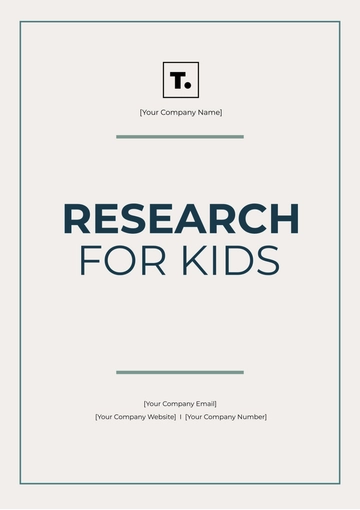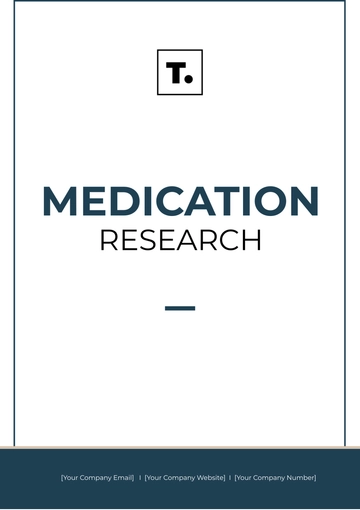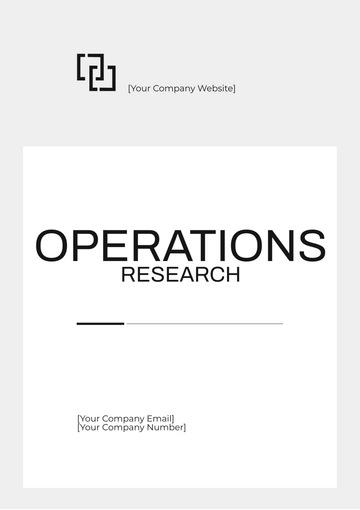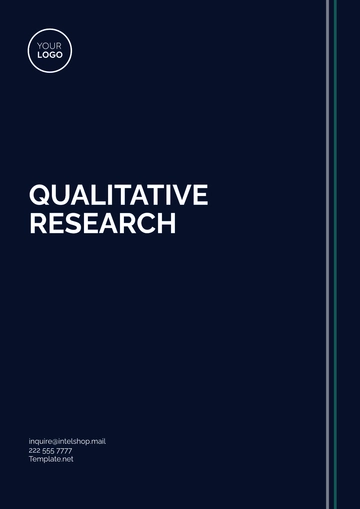Free Continuous Learning & Training Research HR

Introduction
Purpose
The purpose of this document is to provide a comprehensive research template for assessing and improving continuous learning and training programs within [Your Company Name]. The ultimate goal is to enhance employee performance, job satisfaction, and organizational growth. In today's rapidly evolving business landscape, continuous learning and training are not just buzzwords but essential strategies for maintaining a competitive edge. This document aims to serve as a roadmap for HR managers, training coordinators, team leads, and employees to understand the current state of training programs and identify areas for improvement.
Scope
This document covers the following:
Existing training programs
Gap analysis
Recommendations for improvement
It does not cover external training programs or those not directly related to the company's core competencies. The scope is limited to in-house training programs that are aimed at improving the skills and competencies directly related to the roles and responsibilities within [Your Company Name].
Audience
This document is intended for:
HR Managers: To understand the effectiveness of current training programs and identify areas for improvement. This document will serve as a guide for future planning and budget allocation for training programs.
Training Coordinators: To plan and implement new training initiatives based on the findings. The recommendations in this document should serve as a basis for curriculum development and training delivery.
Team Leads: To understand the training needs of their teams and advocate for appropriate training programs. The gap analysis section will be particularly useful for this audience.
Employees: To understand the opportunities for professional development. This document outlines the current training programs and identifies gaps, helping employees to plan their career development.
Methodology
Data Collection
Data will be collected through various methods to ensure a comprehensive understanding of the training landscape within [Your Company Name].
Surveys: An online survey will be sent to all employees to gauge their satisfaction with current training programs. The survey will consist of both multiple-choice questions and open-ended questions to capture quantitative and qualitative data.
Interviews: One-on-one interviews will be conducted with selected employees, particularly those who have recently completed training programs. These interviews aim to gather in-depth insights into the effectiveness of the training programs and identify any gaps that may not be apparent through surveys.
Observations: Classroom and online training sessions will be observed by a team of experts. The observations will focus on the quality of training delivery, engagement level of participants, and the applicability of the training content.
Existing Reports: Past performance reviews, training reports, and other internal documents will be analyzed to understand the historical context and effectiveness of training programs.
Analysis
Data will be analyzed using various methods to ensure a well-rounded understanding of the training needs and effectiveness.
Qualitative Analysis: Interview transcripts and open-ended survey responses will be coded and categorized to identify common themes. This will help in understanding the nuances of employee satisfaction and areas for improvement that may not be captured through quantitative metrics.
Quantitative Analysis: Survey results and performance metrics will be statistically analyzed to identify trends and correlations. This will include measures like average satisfaction scores, performance improvements post-training, and ROI calculations.
Comparative Analysis: The effectiveness of different training programs will be compared using key performance indicators (KPIs) like participant feedback, performance improvement, and ROI. This will help in identifying the most and least effective training programs and serve as a basis for future planning.
Current Training Programs
Overview
The table below provides an overview of the current training programs within [Your Company Name].
Program Name | Duration | Participants | Cost |
Soft Skills | 2 weeks | 50 | $5,000 |
Coding Bootcamp | 1 month | 30 | $3,000 |
Leadership | 3 days | 20 | $1,000 |
Effectiveness
Once the needs are identified, the next step is to develop the content that will fill those gaps.
Soft Skills
The Soft Skills training program focuses on improving interpersonal skills, communication, and teamwork. It has been attended by 50 employees and costs approximately $5,000 to conduct.
Participant Feedback: The program has received an 85% satisfaction rate from participants, indicating a generally positive response.
Performance Metrics: Post-training assessments show a 20% increase in team collaboration metrics, suggesting that the training has a positive impact on teamwork.
ROI: The return on investment for this program is calculated to be 150%, making it a highly effective program in terms of both employee satisfaction and performance improvement.
Coding Bootcamp
The Coding Bootcamp is aimed at improving the technical skills of employees. It has been attended by 30 employees and costs around $3,000.
Participant Feedback: The program has a 70% satisfaction rate, which suggests room for improvement.
Performance Metrics: There has been a 15% increase in coding efficiency among participants, indicating that the program is effective but could be improved.
ROI: The ROI for this program is 120%, which is satisfactory but indicates that there is scope for improvement.
Leadership
The Leadership training program is designed to enhance leadership skills and has been attended by 20 employees. It costs approximately $1,000 to conduct.
Participant Feedback: With a 90% satisfaction rate, this program is highly regarded by participants.
Performance Metrics: There has been a 25% increase in team productivity metrics among participants, indicating highly effective training.
ROI: The ROI for this program is calculated to be 200%, making it the most effective program in terms of both cost and performance improvement.
To provide a visual representation of the effectiveness of the current training programs, the chart below (Participant Satisfaction Chart) shows the participant satisfaction rates for each program.
Notes: This chart shows the participant satisfaction rates for different training programs within the company. As seen, the Leadership program has the highest satisfaction rate at 90%, followed by the Soft Skills program at 85%, and the Coding Bootcamp at 70%.
Gap Analysis
Skills Gap
The following skills gaps have been identified within [Your Company Name]:
Advanced Data Analysis: Despite the availability of data analysis tools, there is a lack of expertise in advanced data analysis techniques like machine learning and predictive analytics.
Project Management: While there are employees with basic project management skills, there is a need for advanced skills like risk management and stakeholder communication.
Communication Skills: Although the Soft Skills program covers basic communication, there is a need for advanced training in public speaking, negotiation, and conflict resolution.
Training Needs
Based on the skills gaps identified, the following training needs have been recognized:
Advanced Excel Training: To improve data analysis skills, advanced Excel training including pivot tables, VLOOKUP, and macros is needed.
PMP Certification: To fill the gap in project management skills, a PMP certification program could be beneficial.
Public Speaking: To improve communication skills, a specialized training program in public speaking and presentation is needed.
Recommendations
Short-Term
Implement Quick Training Modules for Advanced Data Analysis: Given the immediate need for advanced data analysis skills, quick training modules can be developed and deployed within a month.
Conduct Workshops for Communication Skills: Short workshops can be organized to improve public speaking and presentation skills among employees.
Long-Term
Revise Soft Skills Program: The existing Soft Skills program should be revised to include advanced communication techniques and conflict resolution skills.
Introduce a New Program Focused on Project Management: Given the gap in project management skills, a new training program leading to PMP certification should be introduced.
Conclusion
This document serves as a comprehensive guide for assessing and improving the continuous learning and training programs at [Your Company Name]. The recommendations provided are based on thorough research and analysis and should be implemented in a phased manner for maximum effectiveness. The ultimate goal is to enhance employee performance, job satisfaction, and contribute to the overall growth of [Your Company Name].
- 100% Customizable, free editor
- Access 1 Million+ Templates, photo’s & graphics
- Download or share as a template
- Click and replace photos, graphics, text, backgrounds
- Resize, crop, AI write & more
- Access advanced editor
Unlock continuous learning and training excellence with Template.net's Continuous Learning & Training Research HR template. Editable and customizable, it empowers HR professionals to tailor research effortlessly. Seamlessly refine content in our online AI Editor Tool, ensuring adaptability to evolving organizational needs. Elevate workforce development with a template designed for continuous improvement and growth.





























